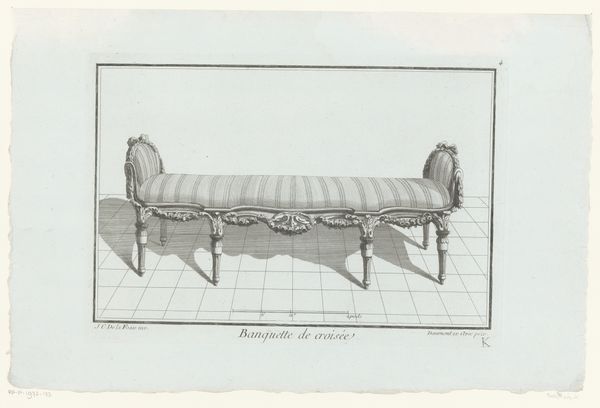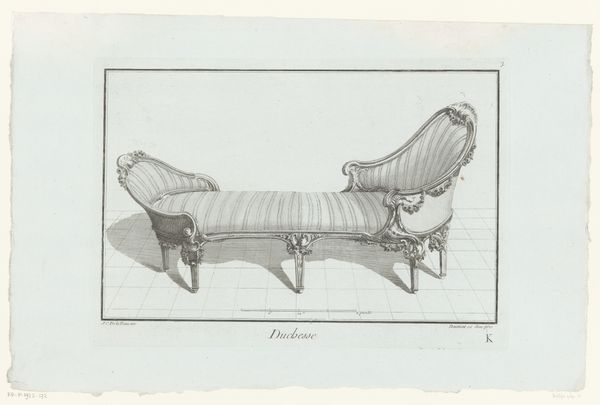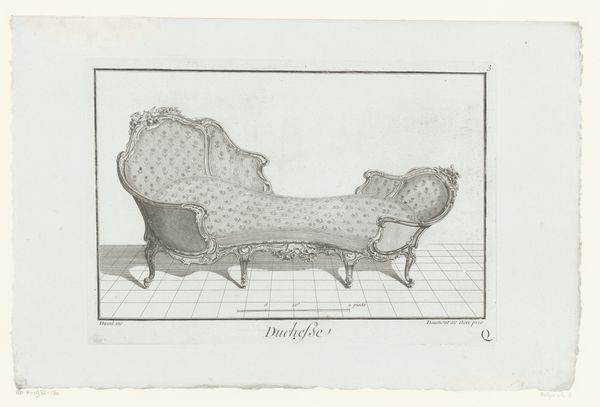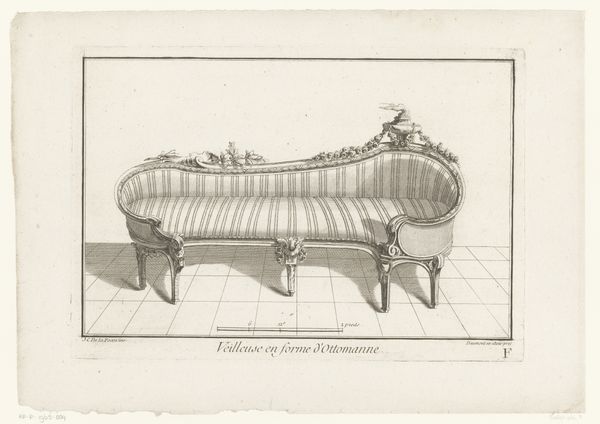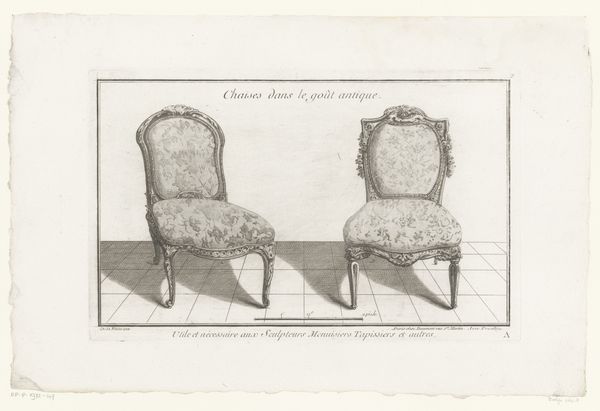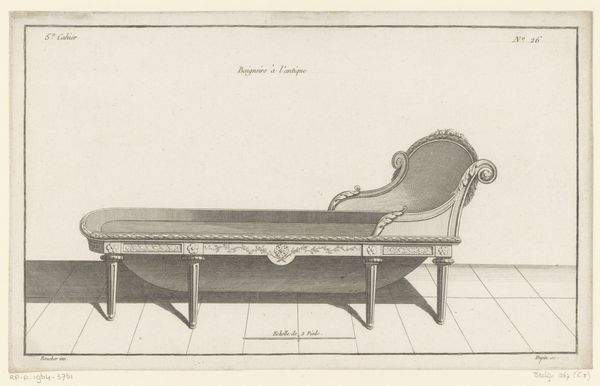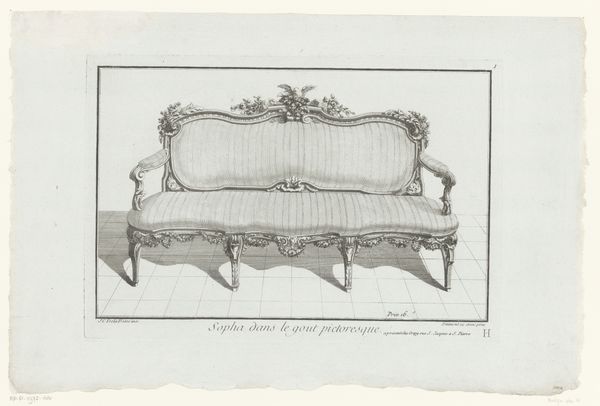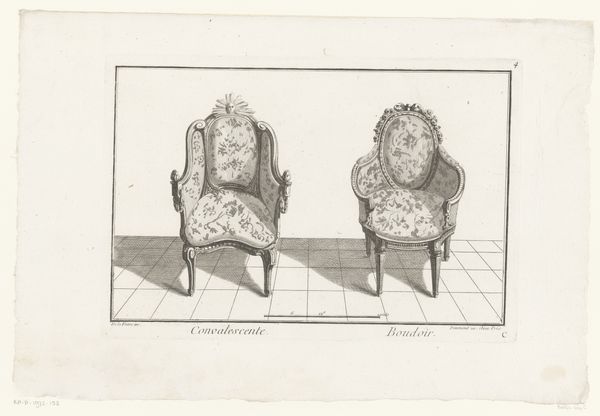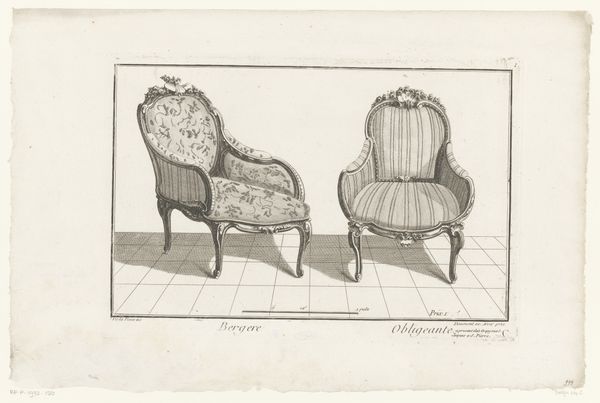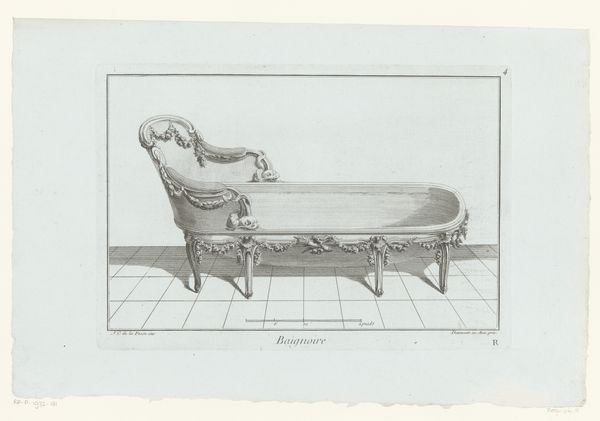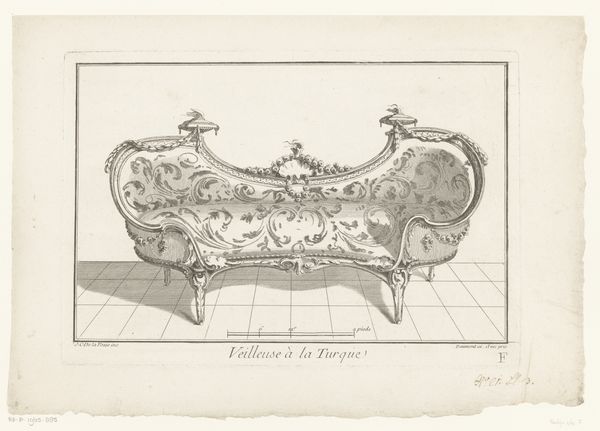
drawing, print, engraving
#
drawing
#
neoclacissism
# print
#
old engraving style
#
furniture
#
history-painting
#
engraving
Dimensions: height 230 mm, width 332 mm
Copyright: Rijks Museum: Open Domain
Curator: Welcome. Before us hangs "Duchesse in drie delen," created sometime between 1753 and 1775, a print now held in the Rijksmuseum collection. Editor: My initial impression is one of restrained elegance. The monochrome palette, the detail in the engraving, all contribute to a sense of refined comfort. Curator: Indeed. This work presents us with a very particular kind of comfort object: what appears to be a design rendering for a 'duchesse brisée'— a chaise lounge in three parts, immensely popular among the aristocracy. What interests me is how this seemingly straightforward depiction actually operates within a broader framework of consumption and societal aspiration. Editor: That’s a very insightful angle. To me, this image reveals something about the public role of art at the time. Beyond pure aesthetics, prints like these served as vital tools in shaping tastes and conveying status, illustrating how furnishing trends were communicated and consumed among elites. It served as visual propaganda for an aspirational lifestyle. Curator: Precisely! We need to think about who made these prints, and how they were distributed. Who held the plates? Were these prints sold, traded, collected, and ultimately consumed like the very object they depicted? It compels us to recognize printmaking and design not merely as craft but as instruments shaping culture. Editor: And, looking at the piece itself, I'm struck by how this isn't simply an objective representation. The print translates an actual, material piece of furniture into a symbolic representation. The lines of the engraving mimic the very labor involved in creating the physical chaise, yet there's a distance. It’s a carefully constructed image promoting very tangible goods within certain social and economic circles. Curator: A potent reminder that even images of furniture carry within them the echoes of material processes, and the social structures from which they emerge. It’s far more than just a pretty sofa, isn’t it? Editor: It is, indeed! It gives us a very neat look at the commerce and politics interwoven in Neoclassical art, a window into how institutions fostered desire and mirrored society's aspirations.
Comments
No comments
Be the first to comment and join the conversation on the ultimate creative platform.

